SALONE DEL MOBILE 2018 HIGHLIGHTS
As Selected By The Champ International Family of Designers and Curators

With an abundance of new talent presenting original ideas, the Salone del Mobile is the design event of the year not to miss. Emphasised by the design community yet again, the design week continues to be the number one design event on the international design calendar for yet another consecutive year, with no reason for the tradition to change at all. If anything, it was noted by visitors that Milan as a city was gaining confidence, opening up more private spaces for events and launches. Designers, curators and journalists all explored the numerous events simultaneously, conversing on urgent subject matter influencing the course of design.
Remaining constants at the Salone del Mobile each year are the visits to Marchesi opening receptions with strict guest lists malleable for the curious, day-time espressos at Paticceria Marchessi and late evenings at Bar Basso where gallery and museum directors converse with emerging designers and journalists alike. The design community is exactly that, a community, where exchange of thought, ideas and suggestions come via a true passion and interest to create progress and innovation.
Artist and architectural installations were once again key marketing tools for many brands, creating immersive experiences not to forget. Magazines such as Apartmento, Surface and Wallpaper timed in their new issue launches during the week to highlight their curation of the leading designers and products not to miss. Vogue Italia opened their doors to the public for the week, and for good reason: they had their offices renovated by designers such as Sabine Marcelis and Faye Toogood, with a brief to ‘look to the future’. The publishing industry is certainly innovating, and the design community embraces it wholly. Immersive events were taken to a new level with the use of clever set design, especially found in Club Unseen created by multi-disciplinary design agency Studiopepe. Their hard-to-enter club saw bartenders making cocktails behind white acetate walls, with live music playing alongside product unveilings. With a focus on sustainability growing each year, no exhibiting brand was able to come close to presenting boundary-pushing techniques or approaches to the changes needed in over-consumption in society and products made with entirely-new materials. Upcycling and re-use of existing materials is certainly on the agenda (for fashion brand Eileen Fisher and Danish company Kvadrat and REALLY), but over-supply needs to be analysed and made a priority in production conversations. We found it particularly surprising that the largest of brands aren’t able to execute an entirely circular design model.
Nevertheless, creativity reigned supreme with original ideas over-flowing all the way from exhibition design and concept, to product design and experience.
We looked to the international Champ friends and family to share their highlights from the week’s events, from off-schedule furniture design exhibitions to classic Italian design villas and palazzos often not open to the public. Scroll below to see the highlights from Alex Mustonen of Snarkitecture, designer Sabine Marcelis, curator Matylda Krzykowski, Jon Gray of Ghetto Gastro, industrial designer Rodrigo Caula, Japanese design duo we+, Melodie Leung (Champ Architecture Editor-at-Large) and Marco Velardi of Apartamento Magazine.

Alex Mustonen’s highlight: The Sol LeWitt exhibition at Fondazione Carrierio
“Looking at Sol Lewitt’s work in a series of empty galleries was a welcome break in the midst of running around Milan to see all of the design exhibitions and installations up last week. However, aside from Snarkitecture’s installation, I think my favourite project last week was the U-Joints exhibition. A smart concept, strong work, and very beautifully executed” – Alex Mustonen
Curated by Rem Koolhaas and Francesco Stocchi, ‘Sol Lewitt Between The Lines’ at the Fondazione Carriero in Milan suggests a new perspective on the American artist’s work. For the first time ever Rem Koolhaas acts as curator, exploring the entire oevre of Lewitt’s work, exploring the confines and process of his work. The exhibition is open until the 1st of May.
Alex Mustonen is an architect and one half of Snarkitecture, a New York-based collaborative practice founded together with the artist Daniel Arsham. The practise is focused on designing within existing spaces, collaborating also with brands and designers. For Salone this year, Snarkitecture collaborated with Caesarstone on a kitchen island, completely re-interpreting the conventional and practical design product, incorporating a melting ice globe, steam clouds and fountain to re-write existing notions and expectancies of the everyday object.
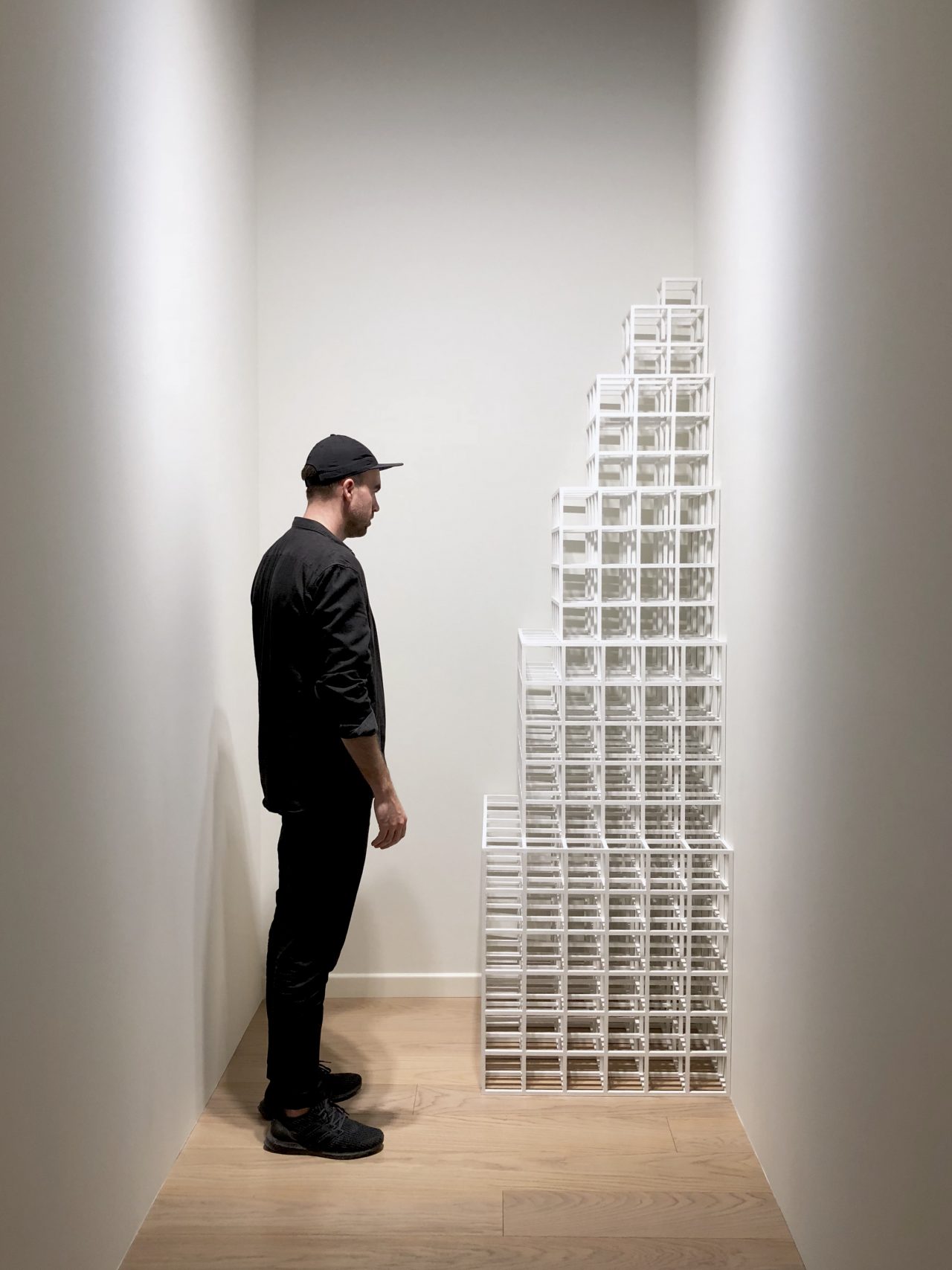
Matylda Krzykowski’s highlight: Adrian Rovero’s Hinge in the U-Joints exhibition
“I once asked a designer during a studio visit if she knew who invented the hinge. Since than I asked many people and no one really knows. We can not precisely determine the hinge’s origin or who is responsible for it. However, what we know is that it become the cornerstone of Industrialisation. A hinge, small or large, plastic or metal, connects two structures with each other. From bridges to cupboard doors. Adrian Rovero’s Hinge represented at the U-Joint exhibition is a celebration of the mechanical bearing in form of a kinematic mobile. The cleverness of Adrian’s object is that there is nothing to connect, it’s the hinge itself that receives adoration”. – Matylda Krzykowski
The U-Joints ‘Equations of Universal Lifestyle’ exhibition, curated by Andrea Caputo and Anniina Koivu, explored the theme of joints and connections in design. More of an educational experience, the exhibition presented the past, present and future of design through an underestimated key design connection and tool. Presented by Milan-based Plus Design Gallery, the epic design exhibition featured over 50 international leading designers including Max Lamb, Martino Gamper, Jonathan Nesci, Peter Saville and Calypso Mahieu.
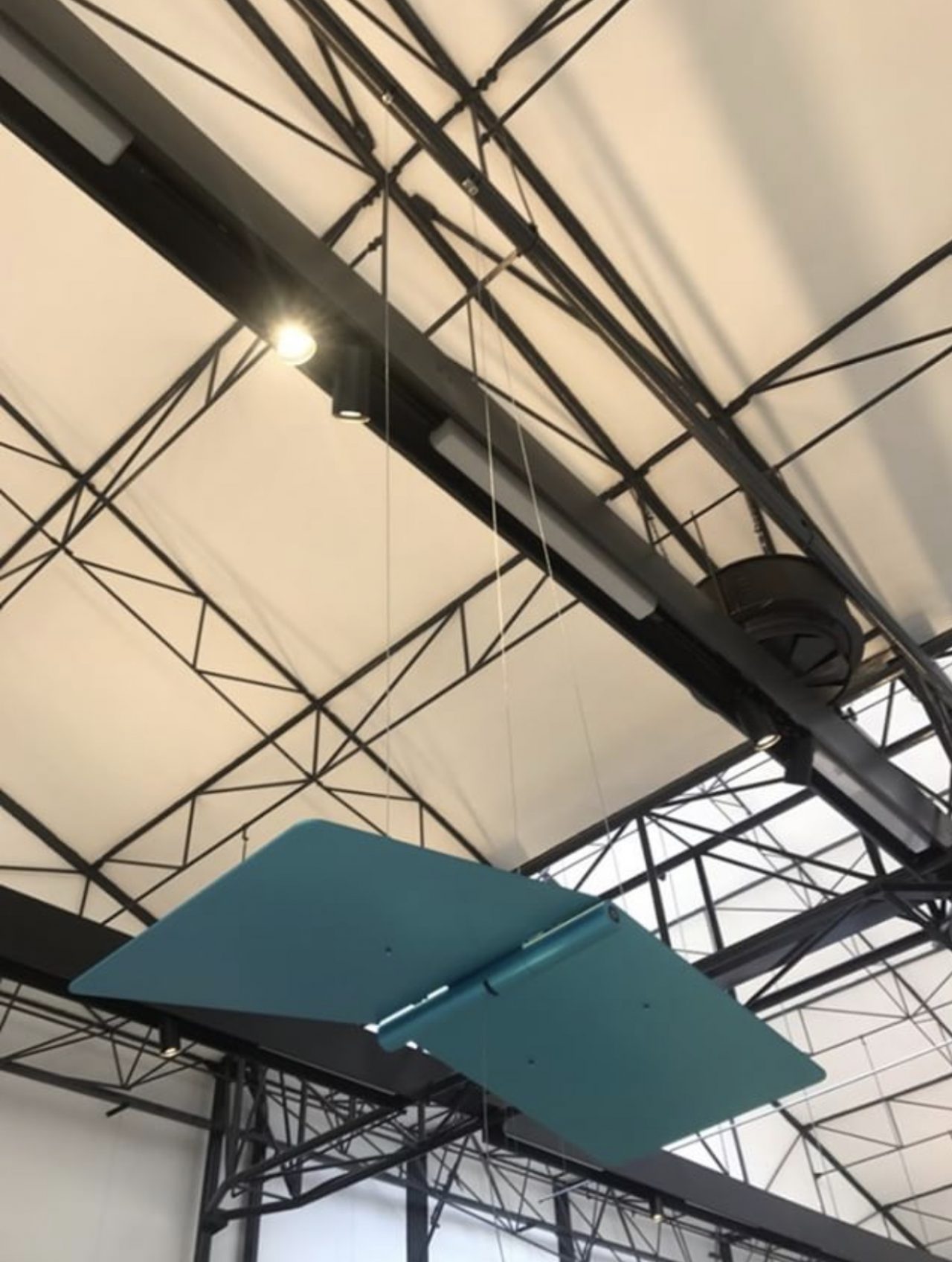
Sabine Marcelis’ highlight: The marble inlays at Villa Borsani
For one week only during the Salone del Mobile, the Villa Borsani, the former home of Italian designer-architect Osvaldo Borsani, was re-opened to the public by the designer’s daughter and grandson. A visionary figure of Italian twentieth-century design, Borsani was an architect, designer, and entrepreneur and most importantly, a pioneer of industrial design. In constant pursuit of the perfect balance between engineered utility and aesthetic beauty, Borsani built the house in 1953 for his twin brother Fulgenzio. Together, Osvaldo and Fulgenzio founded the Italian furniture company Tecno, creating iconic sofas, lounges and office systems. The house itself has an extremely tasteful curation, as noted by designer Sabine Marcelis, specifically highlighting the marble inlays on a dining table in the villa lounge room. The original motifs on the table are by artist Marcello Piccardo, set next to chairs designed by Borsani in 1940. The week-long open house celebrated the upcoming retrospective on Osvaldo Borsani at the Triennial Design Museum opening on May 15, titled Villa Borsani: Casa Libera! Curated by Norman Foster and Tommasi Fantoni (the grandson of Borsani), the retrospective will be on view until September 15.
Sabine Marcelis is a New-Zealand born designer based in Rotterdam. Her approach to design is refreshing, modern and innovative. This Salone del Mobile, Marcelis presented numerous projects, most notably renovating a room in the Vogue Italia headquarters, re-designing the Creative Director office for Giovanni Bianco.
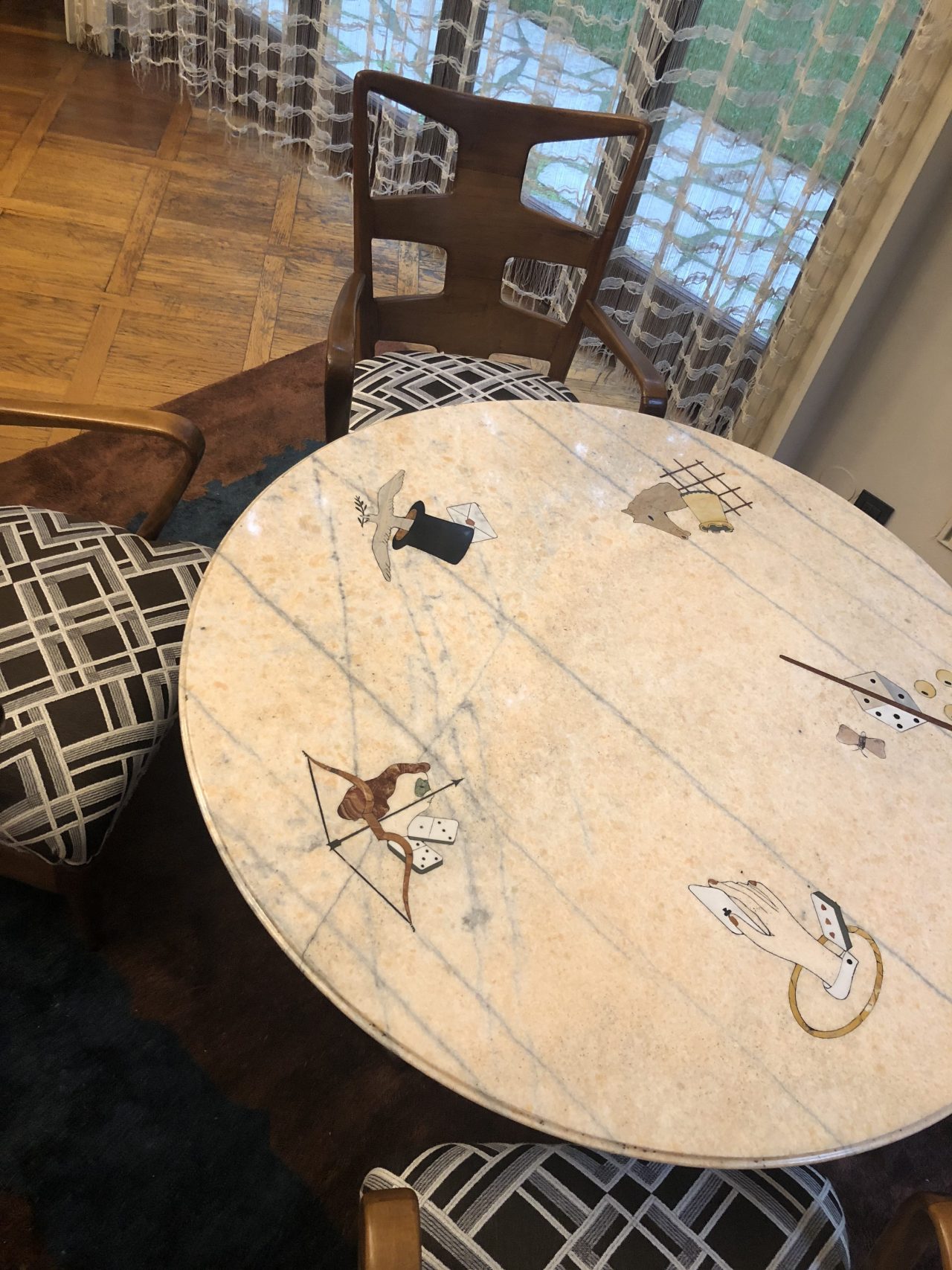
Ghetto Gastro’s highlight: Ini Archibong’s furniture collection ‘Below the Heavens’
Switzerland-based, Ini Archibong is a Nigerian-American designer to watch out for. His first collaboration with furniture brand Sé was presented at the distinguished Rossana Orlandi gallery, a clear highlight amongst many guests to the iconic design premises during the Salone del Mobile. His largest furniture collaboration to date, Archibong stated his intention clearly: to always capture the tension between delicacy and strength. Titled ‘Below The Heavens’ the young designer presented 11 pieces from the collection, referencing the threshold between heaven and earth. Glass, marble and brass were all used to express Ini’s approach to the theme.
Ghetto Gastro is a culinary collective, formed of four Bronx-born individuals: chef Malcolm Livingstone II, chef Lester Walker, chef Pierre Serrao and cultural engineer Jon Gray. GG are a cultural movement combining food, design and community empowerment through transformative experiences and narrative-driven content. With an original approach to everything they do at their core, this super group is constantly innovating across various platforms internationally.

Champ Architecture Editor-at-Large Melodie Leung’s highlight: Lina Bo Bardi’s furniture designs
Presented at the renowned Nilafur Depot, a large warehouse-size design and furniture gallery in Milan’s Lanchetti district, architect Lina Bo Bardi’s furniture designs with E Stúdio de Arte Palma, were exhibited in an ideal exhibition space and context (the Milan Design Week). With many of the works rare objects originating in Brazil, the furniture designs were specifically brought over for the exhibition by curator Nina Yashar (also the founder of Nilafur Gallery) with the support of the Instituto Bardi. Together with Yashar’s own collection of Lina Bo Bardi furniture, which she started collecting 3 years ago, the exhibition showcased the most striking and original designs of Bardi. Born in Rome, Bo Bardi moved to São Paulo in 1946, working alongside her husband and Giancarlo Palanti (also Italian) at the newly established Studio d’Arte Palma. Together with Palanti, Bo Bardi designed furniture, setting up a small furniture factory named Pau Brà, producing designs in local wood. The exhibition is on until December 31, 2018.
Melodie Leung has worked with Champ magazine since 2016 as Architecture Editor, now working as the Architecture Editor-at-Large. A Senior Associate at Zaha Hadid Architects (working with the architecture firm since 2005), Melodie holds a Master’s degree in Architecture from Columbia University. Alongside her architectural work which requires constant travel for particular projects, Melodie also arranges architecture symposiums, chairing panels which highlight and celebrate under-represented female architects and their pivotal work.

Rodrigo Caula’s highlight: Eileen Fisher’s new up cycled textile line ’Waste No More’ project
American clothing designer Eileen Fisher debuted her new up-cycled textile line, DesignWork, presented in the ’Waste No More’ exhibition curated by trend forecaster and long-term collaborator Lidewij Edelkoort. The renowned fashion brand presented the project in an exhibition showcasing garment waste, reflecting the potential of creating desirable tapestries into new garments, an urgent and needed change in the wasteful fashion industry.
Rodrigo Caula is a LA-based industrial designer, currently working as a colour and material designer for Tesla.
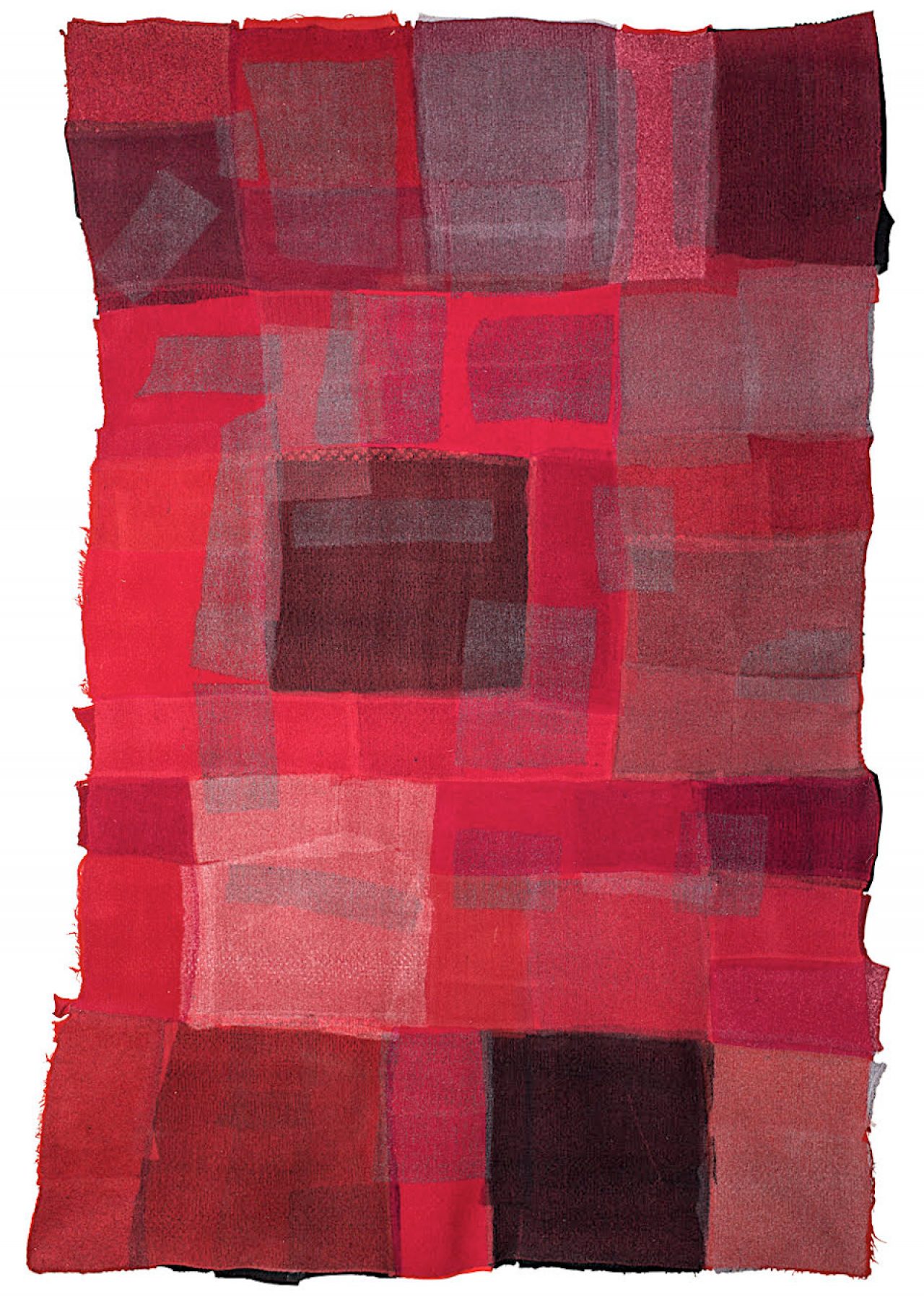
Marco Velardi’s highlight: The garden at Palazzo Clerici
For Apartment Magazine’s 10th Anniversary, the influential magazine celebrated 10 years of independence at none other than at the established and celebrated Palazzo Clerici, in their tranquil and romantic outdoor garden. For the design week, the Palazzo Clerici is melting pot for exhibiting brands and curious designers alike, with this Salone being taken over by brands HAY, Sonos and WeWork (as they presented their visions for the future of design in the indoor rooms). Built in the XVIII century, the Palazzo Clerici and its garden is one of Milan’s superb hidden gems.
Based in Berlin, Marco Velardi is Editor-in-Chief and one of the co-founders of contemporary culture and lifestyle magazine Apartmento Magazine.

we+’s highlight: The U-Joints exhibition
“U-JOINT exhibition was the best show during the week, all curation, research and products are amazing stuff. Want to see it again in Tokyo or somewhere in the world!” – Hokuto Ando, we+
The U-Joints ‘Equations of Universal Lifestyle’ exhibition, curated by Andrea Caputo and Anniina Koivu, explored the theme of joints and connections in design. More of an educational experience, the exhibition presented the past, present and future of design through an underestimated key design connection and tool. Presented by Milan-based Plus Design Gallery, the epic design exhibition featured over 50 international leading designers including Max Lamb, Martino Gamper, Jonathan Nesci, Peter Saville and Calypso Mahieu.
we+ is helmed by two Japanese designers Toshiya Hayashi and Hokuto Ando, who best describe themselves as a design and invention studio. Through their relentless exploration of unusual and unconventional materials, they completely reinvent daily products and challenge our own perspectives about what we most commonly use. The “+” (plus) in their studio name reflects their emphasis on collaboration, and the importance of the direct or indirect collaborative involvement of others (factories, technicians, company partners, gallery directors).
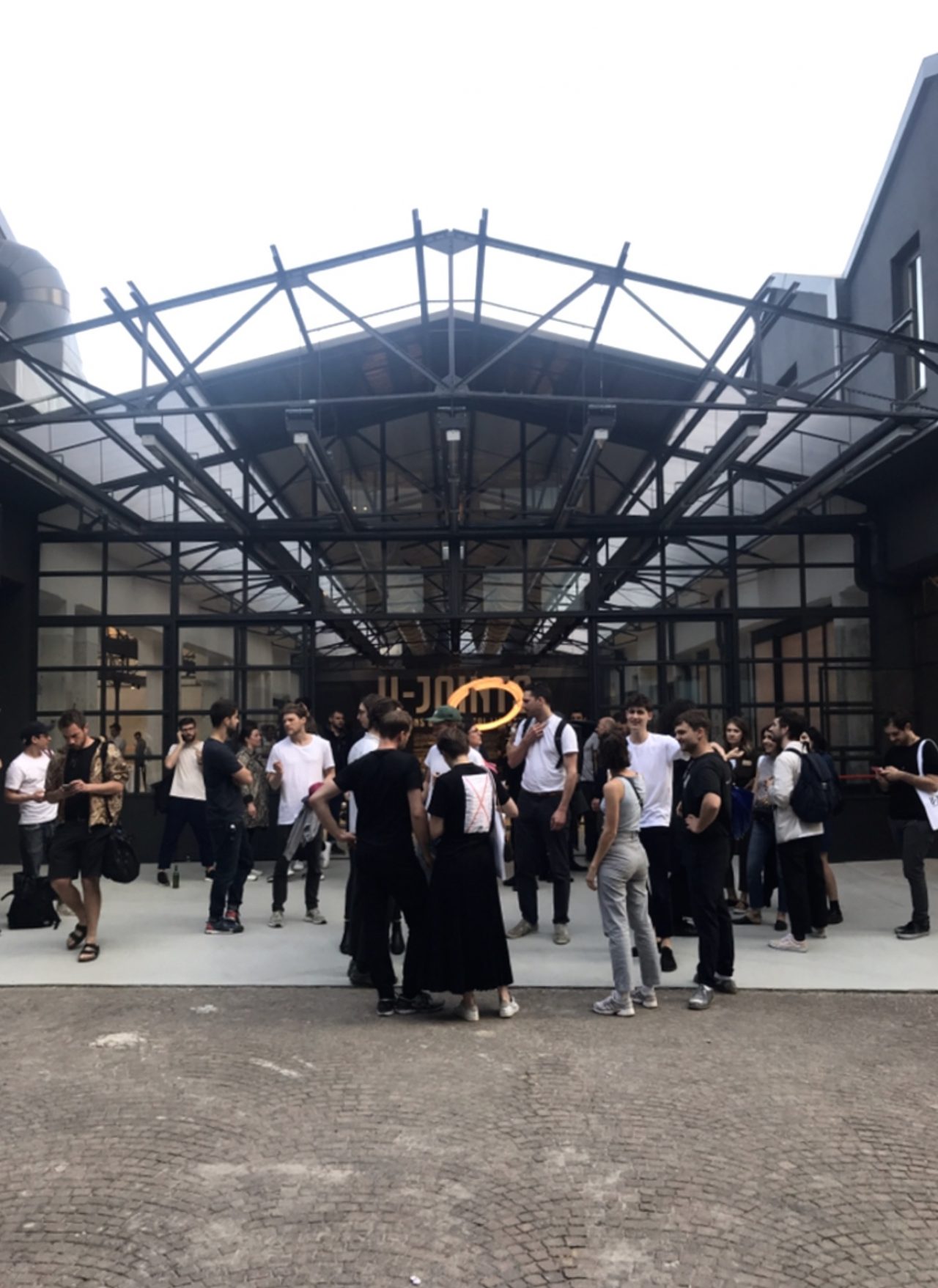
Champ Architecture Editor-at-Large Melodie Leung’s highlight: Lina Bo Bardi’s furniture designs
Presented at the renowned Nilafur Depot, a large warehouse-size design and furniture gallery in Milan’s Lanchetti district, architect Lina Bo Bardi’s furniture designs with E Stúdio de Arte Palma, were exhibited in an ideal exhibition space and context (the Milan Design Week). With many of the works rare objects originating in Brazil, the furniture designs were specifically brought over for the exhibition by curator Nina Yashar (also the founder of Nilafur Gallery) with the support of the Instituto Bardi. Together with Yashar’s own collection of Lina Bo Bardi furniture, which she started collecting 3 years ago, the exhibition showcased the most striking and original designs of Bardi. Born in Rome, Bo Bardi moved to São Paulo in 1946, working alongside her husband and Giancarlo Palanti (also Italian) at the newly established Studio d’Arte Palma. Together with Palanti, Bo Bardi designed furniture, setting up a small furniture factory named Pau Brà, producing designs in local wood. The exhibition is on until December 31, 2018.
Melodie Leung has worked with Champ magazine since 2016 as Architecture Editor, now working as the Architecture Editor-at-Large. A Senior Associate at Zaha Hadid Architects (working with the architecture firm since 2005), Melodie holds a Master’s degree in Architecture from Columbia University. Alongside her architectural work which requires constant travel for particular projects, Melodie also arranges architecture symposiums, chairing panels which highlight and celebrate under-represented female architects and their pivotal work.


































